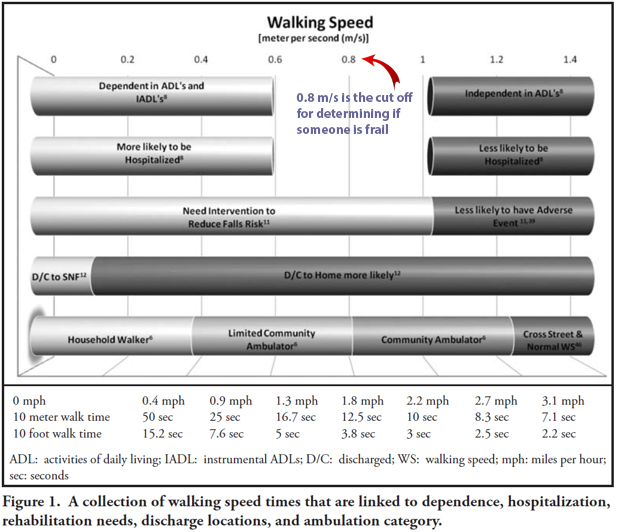Bergland A, Laake K. Concurrent and predictive validity of "getting up from lying on the floor. Aging Clin Exp Res. 2005;17(3):181-185. http://www.ncbi.nlm.nih.gov/pubmed/16110729. Accessed August 11, 2018.
Lundlin-Olsson, L., Nyberg, L., Gustafson, Y. (1998). Attention, frailty, and falls: the effect of a manual task on basic mobility. Journal of the American Geriatrics Society, 46, 758-761.
Palombaro KM, Craik RL, Mangione KK, Tomlinson JD. Determining meaningful changes in gait speed after hip fracture. Phys Ther. 2006 Jun;86(6):809-16. PMID: 16737406.
VanSwearingen, J. M., Paschal, K. A., Bonino, P., & Chen, T. W. (1998). Assessing recurrent fall risk of community-dwelling, frail older veterans using specific tests of mobility and the physical performance test of function. The Journals of Gerontology Series A: Biological Sciences and Medical Sciences, 53(6), M457-M464.
